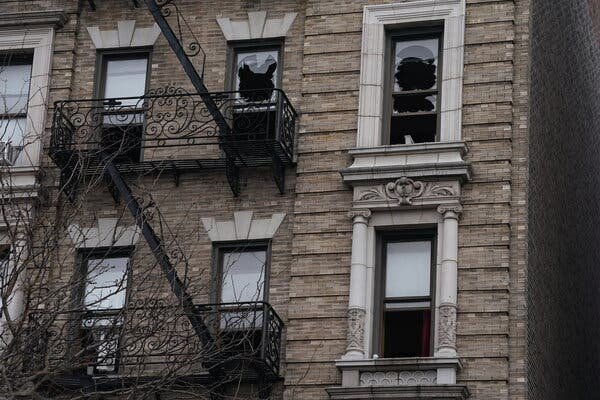Sheila Berman, a 62-year-old woman with back problems who uses a cane, had to yell for help to enter a Brooklyn police precinct due to stairs at the entrance. The NYPD is facing a lawsuit over lack of accessibility at many of its stations for people with disabilities. Despite efforts to improve accessibility, progress has been slow and some facilities remain inaccessible. The NYPD’s plan to address accessibility issues has been criticized for not being comprehensive enough. The lawsuit highlights the ongoing challenges faced by people with disabilities in accessing essential services.
In a recent incident at a Brooklyn police precinct, Sheila Berman, a 62-year-old woman with mobility challenges, had a difficult time entering the station due to stairs at the front entrance. This incident sheds light on the ongoing struggles faced by individuals with disabilities when accessing NYPD facilities. The city and the NYPD have been embroiled in a class-action lawsuit filed by several New Yorkers with disabilities, citing civil rights violations related to the lack of accessibility at the majority of police station houses.
The lawsuit, which has been ongoing for eight years, highlights the long-standing issue of architectural barriers that hinder individuals with disabilities from accessing essential services at police stations. Despite ongoing settlement talks, the status of accessibility upgrades for individuals using wheelchairs, walkers, and other mobility devices remains uncertain. The NYPD’s “AccessibleNYPD” plan aims to make public areas in select stationhouses fully accessible by the end of 2027, with an estimated cost of close to $60 million to bring them into compliance with the Americans with Disabilities Act of 1990.
The court ruling in February 2020 found that the NYPD discriminated against people with mobility disabilities by offering services at stationhouses with significant access barriers. The judge expressed reservations about the NYPD’s plan to make accessibility upgrades only at a limited number of stations, rather than addressing all 77 precincts. The lack of progress in improving accessibility at police precincts has been a point of contention for disability rights advocates, who emphasize the importance of ensuring equal access to emergency services and police facilities for all individuals.
Despite some advancements in accessibility through lawsuits against other city agencies, progress in the NYPD case has been slow. The issue of delayed improvements and the challenges faced by individuals with disabilities in accessing police facilities continue to be major concerns. The lack of accessible entrances, reliance on alternative accommodations, and difficulties in navigating stationhouses pose significant obstacles for individuals like Jean Ryan, a motorized wheelchair user who has faced challenges accessing police services.
The pressure on the NYPD to address accessibility issues is coming not only from disability rights advocates but also from the Justice Department, which has raised concerns about police officers parking in ways that obstruct pedestrian access near precincts. The persistent barriers faced by individuals with disabilities in accessing police precincts underscore the urgent need for comprehensive improvements to ensure equal access to essential services and facilities.
In conclusion, the ongoing struggle for accessibility at NYPD facilities highlights the importance of addressing architectural barriers and ensuring equal access for individuals with disabilities. The need for comprehensive upgrades and improvements to police stationhouses is crucial to guaranteeing that all members of the community can access essential services and programs without discrimination or hindrance. The advocacy efforts of disability rights organizations and legal actions against the city and the NYPD serve as a reminder of the ongoing fight for equality and accessibility for all individuals.
Source: TheCity.NYC









